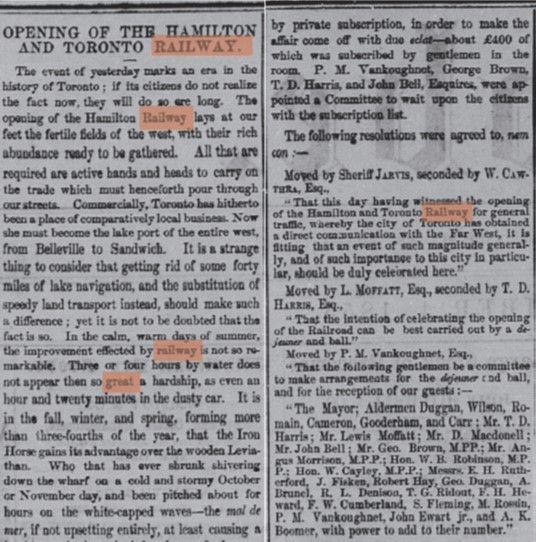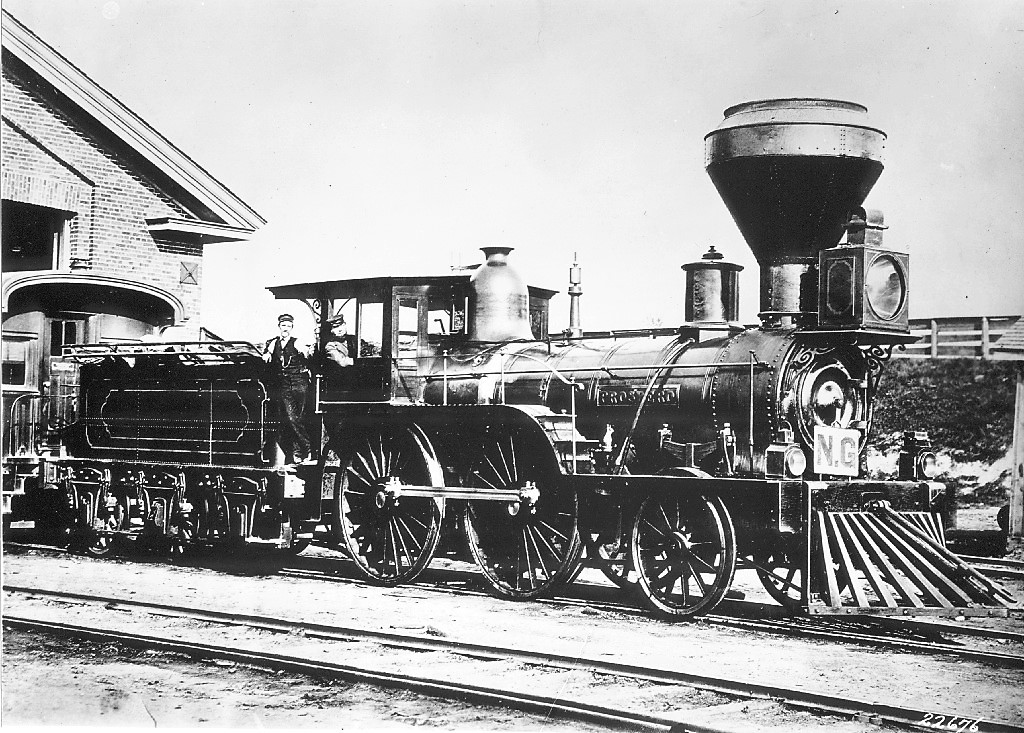166 years ago, a steam locomotive, painted in dark green with polished brass fittings, and pulling several passenger cars full of VIPs – railway officials, financiers, and other assorted dignitaries – travelled merrily along the newly laid Great Western Railway near Clarkson.
The date was December 3, 1855, and the opening of the sparkling new railway connection between Toronto and Hamilton was heralded in The Globe newspaper as ushering in a new chapter of prosperity.


Running westward from Toronto, and approaching Clarkson’s Station, the train engineer abruptly applied the brakes, bringing the behemoth of an engine to an abrupt and unscheduled stop. Something was blocking the tracks.

John Carthew, an aging farmer who owned 75 acres of land (part of Lot 26, Concession 2, SDS) along the south side of the railway right-of-way between Lorne Park and Clarkson, had built a wooden barricade across the tracks. John was not about to let the train pass without his voice being heard.
Needless to say there would have been some unhappy bigwigs on the train. John insisted he had not been paid by the railway for crossing his property. His words fell on deaf ears, and he was promptly arrested, taken on board the train, and the train continued on its merry way. Afterwards the train returned to Toronto, and John was tossed in jail to await his day in court. Obstructing a railway was a serious charge.
Except John was right.
The railway had, in fact, neglected to pay John to cross his land. The error was discovered, and John was released (presumably with copious apologies). He was paid 662 pounds on March 10, 1856, which was significantly more than his neighbours had been compensated for in 1853 when the railway right-of-way had been created.
Who was John Carthew? John was born c1800 in Cornwall, England. His first wife, Grace (1805-1866), also hailed from Cornwall. They were married circa 1834, and the couple had at least three children – William (born 1834), Mary (born 1835), and Elizabeth (born 1838) – before coming to Canada in the early 1840s. John purchased 42 acres near Clarkson in 1846 and added another 33 acres in 1848.
After Grace’s death in 1866, John married widow Elizabeth Card in 1870 at St. Peter’s Anglican Church in Erindale. The witnesses for this marriage were Captain James B. Harris & Margaret M. Harris of Benares in Clarkson. Given the association with the Harris family, it is possible that John Carthew may have been well-to-do. John passed away in 1872 and was laid to rest beside Grace in St. Peter’s Anglican Cemetery. John’s son, William Carthew, sold the family farm in 1876 and moved with his family to Manitoba.
As for the railway and the time when John said “no”, he ended up being well compensated for the railway crossing his property. Also, with a touch of humour, even though he was briefly arrested, he did get a free train ride on the first run of the Great Western Railway – he may have even been our very first resident to travel by train through historic Mississauga.
Note: The Great Western Railway line is the railway corridor that runs parallel to Lakeshore Road, connecting to Lakeview, Port Credit, Lorne Park and Clarkson.





Comments are closed.